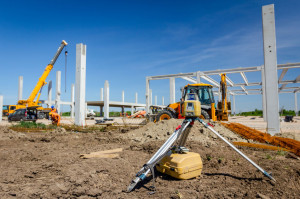The rising impact of robotics on land surveying
 Land surveying is one of the oldest engineering professions, dating back to the Bronze Age – and for a good reason. If you’re concerned about proper land development, then it’s important to have a strong grasp of the 3D positions of points and the distances and angles between them.
Land surveying is one of the oldest engineering professions, dating back to the Bronze Age – and for a good reason. If you’re concerned about proper land development, then it’s important to have a strong grasp of the 3D positions of points and the distances and angles between them.
For the most part in the history of land surveying, humans have been the core feature, although several tools like theodolite have certainly made things easier. However, with the rise of automation and robotics in the 21st century, many industries are undergoing a massive transformation – and the land surveying industry isn’t excluded!
Although robotics is relatively new in land surveying, more companies are adopting it because of its benefits. And in a few years from now, the entire industry would have experienced a momentous shift. In this article, we explore some of the impacts of robotics on land surveying.
- Improved Safety
While land surveying is a low-risk enterprise, there are still many inherent risks associated with the job. These risks range from attacks from wild animals to vehicle accidents to unsteady ground.
For instance, when surveying a congested area, surveyors are at risk of getting hit by a vehicle. Using robots to survey these high-risk areas minimize the risk of injuries for workers. Unlike humans, robots do not get distracted, so they’re better able to spot hazards. What’s more, an attack from a venomous snake or an insect’s sting does not affect robots.
And even in the eventuality that robot gets destroyed in an accident, they can be easily replaced – unlike human life, which is irreplaceable.
- Speed and Efficiency
Machines are way faster and efficient for carrying out monotonous tasks like surveying. While a manual survey can take weeks, a robotic station can complete the same work in a few days.
In the past decade, drones have an increased role in land surveying because they can inspect land from a perspective humans can’t. Surveying from a bird’s-eye view makes drones way faster than foot surveys.
Land surveying also involves lots of mathematical calculations – and humans are prone to errors. Sophisticated robotic surveyors have in-built systems that automate these calculations, minimizing the possibility for error.
- Reduced Cost
This is the direct result of the inefficiencies eliminated by robotics. Faster and more efficient processes typically cost less. Robotics have been shown to reduce the cost of some land surveys by up to $3,000. What’s better than having a faster, more efficient, and cheaper option to work with?
- Accuracy and Precision
There’s a limit to how precise we can go due to our limitations as humans. On the other hand, machines can be designed with insane precision. For instance, technologies like the Light Detection and Ranging (LIDAR) drones can measure areas to the centimeter – thereby providing access to precise data that were once thought impossible.
Asides from precision, robotics is paving the way for new measurable metrics. On top of traditional measurements, machine vision systems could start making atmospheric readings, thermal data, and land stability data.
- Better Risk Assessment
Before land development begins, surveyors have to assess the area for potential risks. And during the first time, they have to do so without fully understanding the risks. Human surveyors can easily get distracted or miss a spot.
Conversely, robotic surveyors that are programmed to look for risks will do just that! Such machines can scan the area to look for potential hazards. But more interestingly, the data obtained can be fed into sophisticated computer algorithms to predict and assess future potential threats, like how the developed structures might be affected by flooding or earthquake. Better risk assessments invariably lead to the overall safety of the building industry.
- Environmental Friendly
Although the land surveying industry isn’t carbon-intensive, some processes still produce undesirable emissions. Traditional tools run of fossil fuels, which release CO2 into the atmosphere. However, with the integration of robotics, these processes can be carried out more quickly and efficiently, reducing the amount of energy consumed per survey. What’s more, robots and drones can even be solar-powered, thereby eliminating the need for fossil fuels.
How Robotics Will Impact Surveying Jobs
While the benefits of robotics in surveying are awesome, a major concern has been how this new trend will affect land surveying jobs. Would people lose their jobs to robots? This has always been the question whenever automation replaces human labor.
The simple fact is that the rise of robotics will affect the jobs of humans in surveying. But rather than looking at it as a trend that will replace humans, it is better seen as a trend that will change the nature of humans’ jobs.
While fewer surveyors will be required on the field for labor-intensive measurements, more professionals will be needed to interpret the data obtained from robots and manage and maintain the robots. In summary, surveying will become more tech-oriented.
Contact us today for more information. We look forward to working with you on your next project!

